– The west African tribal nations that our forefathers were taken from, have many ancient Hebrew customs in there culture
http://www.angelfire.com/ill/hebrewisrael/printpages/hebrewism.html
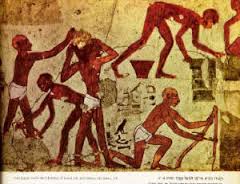 It’s a historical fact that the mass majority of captive slaves brought to the Americas, came from West Africa, although some were brought from East Africa, they were the minority. The west African tribal nations that our forefathers were taken from, have many ancient Hebrew customs in there culture. The KAFFIR, BO, GREBO, MARIBUCK, MAVUMBA, AKRA, FANTI, AKIN, YORUBA, KONGO, AND ASHANTI. Just to name a few of the many sub-Saharan nations that engage in ancient Israelite rituals.
It’s a historical fact that the mass majority of captive slaves brought to the Americas, came from West Africa, although some were brought from East Africa, they were the minority. The west African tribal nations that our forefathers were taken from, have many ancient Hebrew customs in there culture. The KAFFIR, BO, GREBO, MARIBUCK, MAVUMBA, AKRA, FANTI, AKIN, YORUBA, KONGO, AND ASHANTI. Just to name a few of the many sub-Saharan nations that engage in ancient Israelite rituals.
Such rituals include
• CIRCUMCISION,
• THE DIVISION OF THEIR TRIBES INTO TWELVE, BLOOD SPRINKLING UPON THEIR ALTARS AND DOOR POSTS,
• MARRYING OF THEIR BROTHER’S WIFE AFTER DEATH,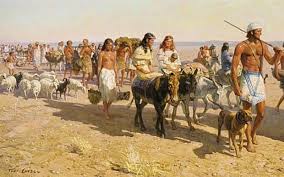
• SEPARATION AND PURIFICATION AFTER CHILD BIRTH,
• UNCLEANNESS DURING CHILD BIRTH,
• UNCLEANNESS DURING MENSTRUATION
• NEW MOON CELEBRATIONS.
• Plus many more.
Among the ASHANTI tribe the priesthood is hereditary to a specific family such a family has little or no possessions, is exempt from all taxes, supplied with food and advises the king. Compare this with the Levities of ancient Israel and you will see that both are exactly the same.
The name ASHANTI has Hebrew origins, the “TI” at the end means race of or people of, Ashan was the name of a city located in southern Israel Judah (Joshua 15:42 – 19:7 / 1st chronicles 4:32 – 6:59).
The word Ashan in Hebrew means smoke city / burning city. ASHANTI means the people of Ashan or the people of the smoke city, This was the reference to the city of Ashan after the Romans destroyed it in 70 C.E.
In a very informative book entitled HEBREWISM OF WEST AFRICA By Joseph J Williams. He gives detailed description of the Hebrew customs in many of the west African tribes. These were the tribes who were the main suppliers of slaves during the slave trade. And these are the tribes that the majority of Hebrews in the west are descendant from. I will present a few excerpts from his book, and this should further convince you of who the children of Israel are.
NOTE: I must say here that this book was written in the 1930’s and the author who is white quotes some “racist” authors, from as far back as the 1700’s. He also makes some misguided comments himself, as he tries to find out how so much Hebrew culture and lifestyle, got to West Africa. He would have known the answer to that had he known the prophecies. But nonetheless there is still A LOT OF useful information contained in HIS book.
PAGE 22 In the first place, many Hebrewism were discovered in the ASHANTI tribal customs. Then, several ASHANTI words were found to have a striking resemblance to those of equivalent Hebrew meaning. finally the supreme being of the ASHANTI gave a strong indication of being the “Yahweh” (YHWH) of the “old testament”.
PAGE 23, It was indeed surprising how many HEBREWISM, either real or at least apparent, were to be found among the unislamised tribes.
PAGE 52 In both ASHANTI and Hebrew the traditional vowel sound is equally important for the true signification of words.
PAGE 56, Thus in conjugation of the verb the ASHANTI prefix the personal pronouns to the verb stem, the same as it is found in the imperfect of Hebrew.
PAGE 61, One cannot help being impressed by the number of customs and practices there described that find their counter part among the ancient Hebrews. Thus, for example the Mosaic law of intra-tribal-marriages, which was devised expressly to preserve the inheritance of the daughters in the tribe and family of their father (NUMBERS 36:12) finds a close verification among the ASHANTI of today. And the cross-cousin marriages, so characteristic of the latter, are strictly similar to that of the daughter of salphadd who wedded the sons of their uncle by their father (NUMBERS 36:2). Again the preserving of certain names in a family is as much sought after by the ASHANTI as it was of old among the Hebrews, as shown in the case of naming of John the Baptist when the objection was made, “there is none of your Kindred that is called by this name” (Luke 1:61).
PAGE 62, So also the remarkable simplicity of the ASHANTI marriage and the distinctive part that wine plays in the ceremonial reminds one of the ancient Hebrews.
PAGE 63, Not only in the marriage ceremony itself but also in after marriage customs there is a strange similarity between the ASHANTI and the Hebrews. Thus, for example, for 8 days after the birth of a child the ASHANTI “mother is considered as unclean”. It is only on the 8th day, at the Ntetea that the child receives its personal name, and on the 40th day a still further ceremony has to be observe. In all this we are certainly reminded of Hebrew customs. Further, the ASHANTI women at the menstrual period, even to the retirement to the bara hut, read like a page borrowed from the book of Leviticus, (15:19-20). And the system of ASHANTI ablution to prevent legal uncleanness constantly brings to mind similar practices which were common among Hebrews.
PAGE 66, Thus far, however, we have shown certain cultural elements common to the ASHANTI and the ancient Hebrews, such as the ob cult, religious dances, use of “Amen”, vowel value, patriarchal system, parallel symbolism of Authority in “stool” and “chair”, endogamy, cross-cousin marriages, familiar names, exogamy, simplicity of marriage rite and the part wine plays in the ceremony, uncleanness after child birth, purification ceremony, Menstrual seclusion. and ceremonial ablutions; besides ASHANTI loan words of apparent Hebrew origin.
PAGE 70, For they ascribe to god the attributes of omnipresence, omniscience, and Invisibility, besides which they believe that he governs all things by providence. By reason god is invisible, they say it would be absurd to make any corporeal representation of him. Wherefore they have such multitude of Images of their Idol gods which they take to be subordinate deities to the supreme god.
PAGE 72, In the very fact that the Hebrews, despite their service of the true god frequently relapsed into idolatry. Captain Rattray, finds a parallelism with the ASHANTI, where, as Bosman noted, one finds a belief in a supreme being side by side with multitudes of their idol Gods.
PAGE 78, And there is a common saying among the ASHANTI: no priest may look upon the face of his God and live which sounds remarkably like an echo of “Yahweh’s” (YHWH) warning to Moses at Mount Sinai “Thou canst see my face for man shall not see me and live”.
PAGE 80, The supreme being of the ASHANTI is identical with the god of the Christians, the Yahweh of the old testament: and further that their tribal worship is strangely parallel to that of the divided worship that existed in Jerusalem immediately prior to the Babylonian exile, as we will see later in more detail.
PAGE 82, The breastplate on the central figure, the Herald (Osene), who is called by Stanley the Town-Crier, is strikingly similar to the breast plate of the High Priest among the Ancient Hebrews, even to its division into twelve parts. The head dress of the Herald, too with its gold disc in front satisfies the description of the miznefet as given in the Jewish Encyclopedia. “A tiara, or perhaps a peculiarly wound turban, with a peak, the front of which bore a gold plate with inscription “Holy unto YHWH”. However, the division of the breast plate into twelve parts is certainly distinctive. So also is the head dress with gold disc in front.
PAGE 83, The ASHANTI Myth might thus record progressive stages in the manifestation of “Yahweh” (YHWH) to the Hebrews; the burning bush; Sinai and the Covenant, that established the Nation as God’s Chosen People.
This is only a few of the many comparisons he found out that existed among just ONE of the tribes that we (in the west) are descendant from. It would be way to lengthy to include all the tribes of west Africa who have Hebrew culture.
Today all of Africa has been lumped into one, Meaning that “All black skinned people are of the same culture, customs, etc.” So as a consequence all this Hebrewism has went unnoticed by the world at large. Most of the customs that are taught to us as being “Traditional” African culture are actually cultural traits that can be found right in the first five books of your bible.
In the slave Narrative by Olaudah Equiano, He tells of how his native customs is parallel to the Hebrews customs found in the bible,
He says:
“Like the Israelites in their primitive state, our government was conducted by our chiefs or Judges, our wisemen, and elders; and the head of a family, with, enjoyed a similar authority over his household with that which is ascribed to Abraham and the other patriarchs. The law of retaliation prevailed almost universally with us as with them; and even their religion appeared to have shed upon us a ray of its glory, though broken and spent in its passage. or eclipse by the cloud with which time , tradition, and ignorance might have enveloped it. For we had our circumcision ( a rite I believe, peculiar to that people) we had also our sacrifices and burnt-offerings, our washing and purification, on the same occasions as they had”.
“I came at length to a country, the inhabitants of which differed from us in all these particulars. I was very much struck with this difference, especially when I came among a people who did not circumcise, AND WHO ATE WITHOUT WASHING THEIR HANDS”.
Olaudah Matthew 15:1-2,”Then came to Yahshuah scribes and Pharisees which were of Jerusalem, saying
(2) Why do your disciples transgress the tradition of the Elders? FOR THEY WASH NOT THEIR HANDS WHEN THEY EAT BREAD.
In a article by William Levi Ochan Ajjugo who is a member of the Madi tribe in the country of Sudan. He tells of the Hebrew customs among his and other tribes in the Sudan.
“When most people think of Judaism in black Africa, they think of the so-called Falashas, Bet Israel, Ethiopian Jews who have kept the essentials of biblical Judaism despite being isolated geographically from other Jews for thousands of years.
The Falashas are in fact the tip of the iceberg. Judaism came to Africa long before Islam or even Christianity, itself an early arrival. Hebrews have been in Africa hundreds of years before the exodus from Egypt. So influential was ancient Judaism in northern and eastern Africa that anthropologists have devised a test to tell whether a given tribe or people has Hebraic roots: It does so if males are circumcised at age of 1 or earlier.
I am from South Sudan, the largely Christian, African portion of the Sudan, which has long been dominated by Arab Muslims to the north, in Khartoum. I am from a tribe called the Madi, and while we did not retain Judaism as thoroughly as did the Falashas in neighboring Ethiopia, I am amazed as I look back at how many of our customs seem to have come from the Hebrew Scriptures.
Among Christians and non- Christians like, one G-d was worshiped. As in the Book of Leviticus, blood sacrifices were offered for sins. The worst sins required the sacrifice of a sheep, the ones below these a Goat, and the “least” sins a chicken. A hereditary group of elders or priests decided which to sacrifice, and presided over these and other ceremonies.
Dietary laws were practiced; certain animals were “unclean” and could not be eaten. Ceremonial washing of hands was required when leaving home. Certain days of the year were set apart as holy. On such days, all was pledged to the one G-d of the heavens who forgave sins.
The Madi also use a ram’s horn (“bilah”) to call people together for various purposes. My father, who was an hereditary elder, would often blow the bilah to gather the people together for a ceremony or to discuss a matter of importance.
If a man died, his brother married his widow. This is in Leviticus, and also is imbedded in Madi culture, as is the “kinsman-redeemer” custom found in the Book of Ruth in connection with Boaz’s marrying Ruth. In Ruth 4:7, it says that “in earlier times in Israel”, the redemption and transfer of property became final when one party took off his sandal and gave it to the other. This is precisely what the Madi did when I was growing up.
In Deuteronomy 15:19, the children of Israel were commanded to set apart for the L-rd all first-born males of their herds and flocks. None were to be put to work or, in the case of sheep, shorn. Again, this is a Madi custom as well.
Many of these customs are also practiced by other tribes in the Sudan. One Madi custom, though, is most striking in its obvious implication: All males are circumcised — as I was — on the 8th day.
When I was growing up, I did not know that any of these were “Jewish” customs. It was only when I began studying the Bible that the connection became clear. Most tribes who practice these customs do not know what “Jewish” means; they only know that these are the ways of their own forefathers.
Christian missionaries have long misinterpreted these “ways”, especially missionaries from denominations which de- emphasize the “Old” Testament. Many labeled groups like Madi “pagan”, “animist”, or, incredibly, “without religion.”
Today, the Islamic fundamentalists who rule the Sudan use similar terms to describe the tribes of South Sudan, including the Madi. Unlike the Christian missionaries of the past, however, the Islamicists know better. On more than one occasion, I was called “Jew” in a disparaging way by Muslims when I was living in the Sudan.
The current Islamic regime in Sudan is waging a jihad — a war of extermination — against the people and tribes of South Sudan. Almost 3 million of my people have been butchered in a genocide that is worse than anything the world has seen since the Holocaust. Those who know of this under reported slaughter rightly see it as religious in nature — a war of Islamic imperialism against largely Christian South Sudan. It is also a cultural war of Arab- dominated culture against African culture. And part and parcel of African culture — at least in this area of Africa — are the remnants of Judaism.
For those would like to see such remnants preserved, here is yet another reason to stand up for the brave people of South Sudan”.
Those brothers and sisters in the Southern Sudan are Israelites, These Hebrews are still being taken captive and put into slavery in the Sudan, they are suffering the curses of Deuteronomy 28:
In another article By George E. Lichtblau entitled
“Jewish Roots in Africa”, he gives a details about the Hebrews in west Africa.
“Claims of a historic presence of Jewish communities in certain regions of Africa, notably West and Southern Africa, seem esoteric when first mentioned. This presence goes back not just centuries, but even to biblical times.
Of course in two areas such a communal presence on the African continent remains a firmly acknowledged part of Jewish history and experience (North Africa and Egypt/Ethiopia). A Jewish presence in Egypt and the former Kingdom of Kush are described in the Book of Exodus. Yet even after their exodus from Egypt and their settlement in the land of Israel, the Jewish tribes retained certain nomadic characteristics which are reflected throughout their history.
For example, in the 10th and 9th centuries B.C.E. Kings David and Solomon sought to expand Jewish influence and trade throughout the Mediterranean, including North Africa, Egypt, the Arab Peninsula and the Horn of Africa, as well as Persia. Often such trade promotion and colonizing drives were arranged in cooperation with the Canaanite and the neighboring Kingdom of Tyre. These kingdoms often lent their military backing to these colonizing efforts, which led to the establishment of numerous settlements by Jewish artisans and traders throughout these regions.
But the subsequent scattering of a Jewish presence and influence reaching deep into the African continent is less widely acknowledged.
Pressed under sweeping regional conflicts, Jews settled as traders and warriors in Yemen, the Horn of Africa, Egypt, the Kingdom of Kush and Nubia, North African Punic settlements (Carthage and Velubilis), and areas now covered by Mauritania. More emigrants followed these early Jewish settlers to Northern Africa following the Assyrian conquest of the Israelites in the 8th century B.C.E., and again 200 years later, when Jerusalem was conquered by the Babylonians, leading to the destruction of the First Temple.
This catastrophic event not only drove many Jews into exile in Babylon, but also led to the establishment of exile communities around the Mediterranean, including North Africa. Then, with Israel coming under Greek, Persian and later Roman rule and dependence, renewed waves of Jewish traders and artisans began to set up communities in Egypt, Cyrenaica, Nubia and the Punic Empire, notably in Carthage, whence they began to scatter into various newly emerging communities south of the Atlas mountains. Several Jewish nomadic groups also started to come across the Sahara from Nubia and the ancient kingdom of Kush.
The Jewish presence in Africa began to expand significantly in the second and third centuries of the Christian era, extending not only into the Sahara desert, but also reaching down along the West African coast, and possibly also to some Bantu tribes of Southern Africa (where some 40,000 members of the Lemba tribe still claim Jewish roots). The names of old Jewish communities south of the Atlas mountains, many of which existed well into Renaissance times, can be found in documents in synagogue archives in Cairo.
In addition, Jewish, Arab and Christian accounts cite the existence of Jewish rulers of certain tribal groups and clans identifying themselves as Jewish scattered throughout Mauritania, Senegal, the Western Sudan, Nigeria, and Ghana. Among notable Arab historians referring to their existence are Ibn Khaldun, who lived in the 13th century, a respected authority on Berber history; the famous geographer al-Idrisi, born in Ceuta, Spain in the 12th century, who wrote about Jewish Negroes in the western Sudan; and the 16th century historian and traveler Leon Africanus, a Moslem from Spain who was raised by a Jewish woman working in his family’s household, who is said to have taught him Hebrew and emigrated with the family to Morocco in 1492. Leon Africanus later converted to Catholicism but remained interested in Jewish communities he encountered throughout his travels in West Africa.
Some evidence can also be derived from surviving tribal traditions of some African ethnic groups, including links to biblical ancestors, names of localities, and ceremonies with affinities to Jewish ritual practices. Moreover, the writings of several modern West African historians and two personal anecdotes indicate that the memories of an influential Jewish historical past in West Africa continue to survive.
I still remember from my assignments in the 1960’s as a Foreign Service Officer an encounter with Mr. Bubu Hama, then president of the National Assembly in Niger and a prolific writer on African history. He told me that the Tuaregs had a Jewish queen in early medieval times, and that some Jewish Tuareg clans had preserved their adherence to that faith, in defiance of both Islamic and Christian missionary pressure, until the 18th century. In several of his books Hama even cites some genealogies of Jewish rulers of the Tuareg and Hausa kingdoms.
A related story about surviving memories of Jewish roots in West Africa was told to me around 1976 by former Israeli prime minister Shimon Peres. He had just returned from a meeting of the Socialist International, during which he had met with then president Leopold Senhor of Senegal. In the course of their discussion about the possibility of normalizing Senegalese-Israeli relations, Senhor had told him that he too had Jewish ancestors. At that time we both smiled somewhat incredulously. Yet, indeed, there are a number of historical records of small Jewish kingdoms and tribal groups known as Beni Israel that were part of the Wolof and Mandinge communities.
These existed in Senegal from the early Middle Ages up to the 18th century, when they were forced to convert to Islam. Some of these claimed to be descendants of the tribe of Dan, the traditional tribe of Jewish gold and metal artisans, who are also said to have built the “Golden Calf”
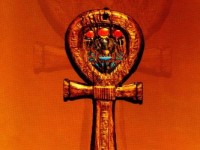
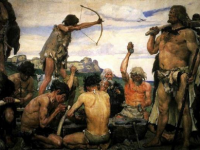
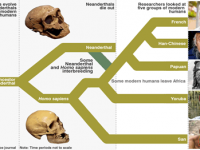

Please can u send me more PDF on the hebrewism